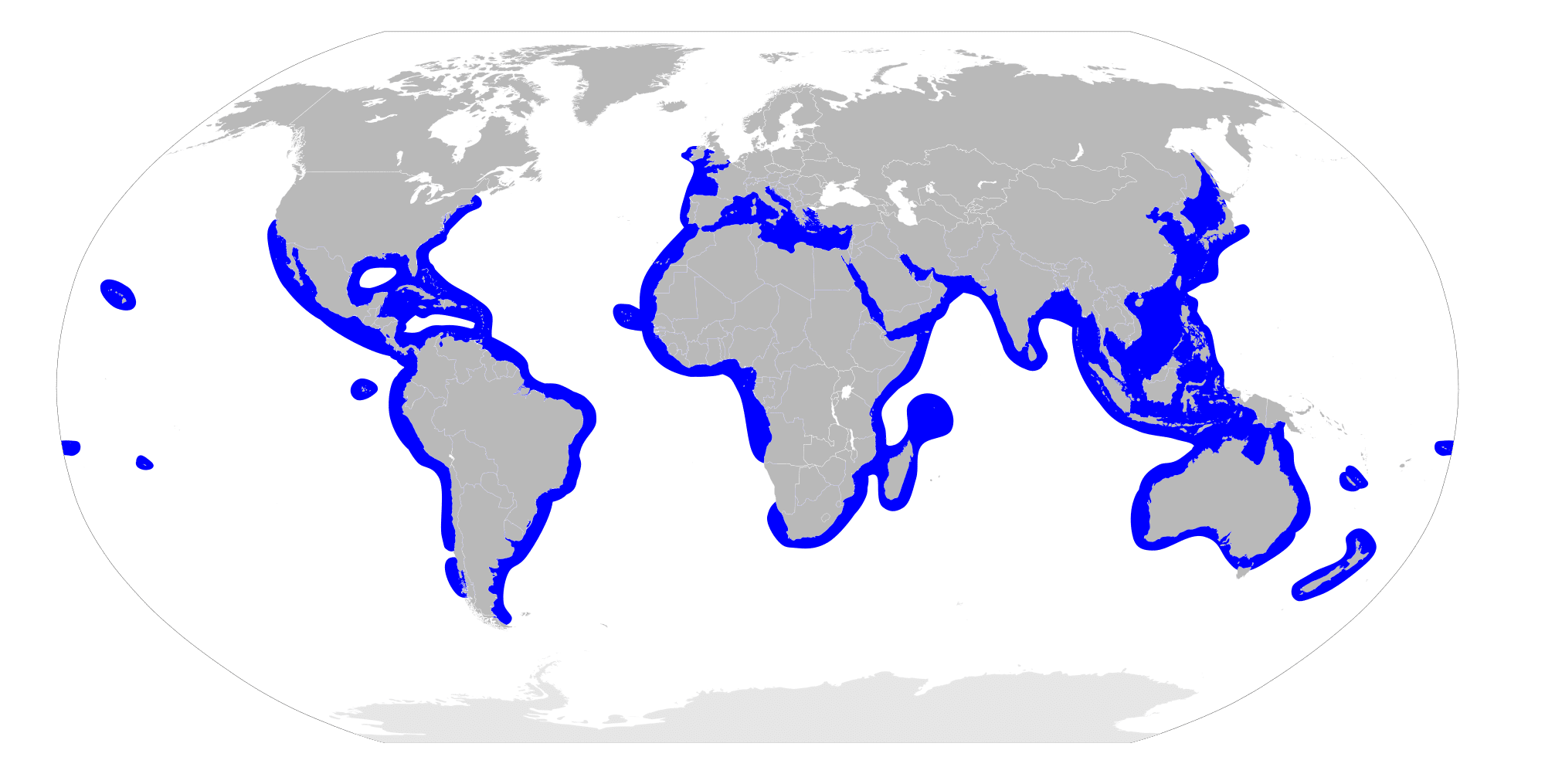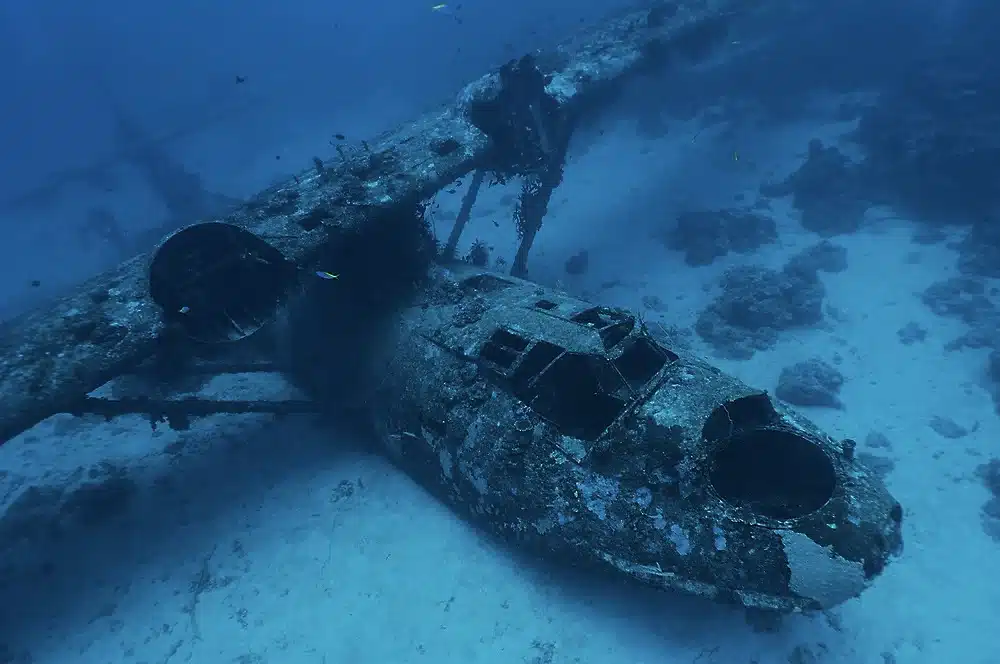Great Hammerhead Sharks can be spotted very far off shore as well as near the shoreline. They often migrate in large groups during the summer in search of cooler waters. These sharks are usually in temperate or tropical waters, and they can survive in estuaries, sandy plains, kelp forests, coral reefs, rocky reefs, fresh waters, the open ocean, the deep sea, polar sea, and intertidal waters.
Great Hammerheads get around easily, and they are distributed throughout the world in quite a few places. If you happen to be around the Japanese, Indian, Arabian, Amazonian, Madagascaran, Southeast Asian, Southeast Australian/ New Zealand, Northern Australian, Western Australian, West African, Eastern North Atlantic/ Mediterranean, Caribbean, Western North Atlantic, Chilean, South Pacific, or Tropical Eastern Pacific waters, you may just catch a glimpse of a Great Hammerhead Shark.

Using satellite tag technology, the scientist was able to track one of these nomadic sharks for 62 days to discover its 1,200 kilometer (745 mile) journey from the coast of South Florida to the middle of the Atlantic off the coast of New Jersey.
“This animal made an (extraordinarily) large movement in a short amount of time,” said research assistant professor Neil Hammerschlag. “This single observation is a starting point, it shows we need to expand our efforts to learn more about them.”
Researchers believe the shark was most likely following food such as mahi-mahi off the continental slope and into the Gulf Stream.
These incredible animals can be enjoyed by divers in a number of locations around the world. They are known to gather in larger numbers at certain times of the year, increasing the chances of exceptional encounters. Found in tropical coastal and continental waters, the extraordinary flattened shape of their heads, known as the cephalofoil, is now believed to be linked to enhanced vision and sensory perception.

Of the 11 species of hammerhead shark, it is schools of scalloped hammerheads (Sphyrna lewini) and the impressive great hammerheads (Sphyrna mokarran) that provide the greatest allure for divers.
The best spots are as follows:
1. Banda Sea, Indonesia – nutrient rich water surrounding these islands attract big pelagics including big schools of hammerheads!
Holiday-makers on liveaboard cruises around the Banda Sea can expect to find plenty of rare and unusual critters and stunning corals, but also fantastic opportunities for pelagic sightings and schools of larger fish such as elusive whale shark and large numbers of hammerhead sharks around Pulau Nils, Nils Desperandum and Pulau Dusborgh. They migrate through this area following the Indonesian Throughflow in September-October.
2. Galapagos Islands – scalloped hammerheads are abundant around Darwin Island and Wolf Island. Hammerheads can be seen all year round, although June to November is the much calmer weather. The area consists of 13 islands and 6 small isles, 1000km off the coast of Ecuador. You can fly into the islands from the mainland to either San Cristobal or Baltra airports.
3. Cocos Islands, Costa Rica – are located 550km off the coast of Costa Rica, with liveaboard trips leaving from the port of Puntarenas. There are 20 superb dive sites including steep vertical walls, blue water diving, pinnacles teeming with life and speedy drift dives. The Hammerheads congregate in the hundreds here, in particular sites such as Bajo Alcone, Dirty Rock and Punta Maria are all favorite hammerhead hangouts. The best time to see them is June through to September.
4. Layang Layang, Malaysia – the atoll is set in 2,000m of water and 300km off Borneo, you are almost guaranteed schools in their hundreds at the right time of year. We haven’t been here yet but we can still help you. There are around 12 dive sites in the immediate area, no more than 15 minutes from the island so travel time is short. The number one hammerhead dive is The Point but you’ll also see them on most of the other dive sites too, the best being Gorgonian Forest, Dogtooth Lair and Shark’s Cave.
 Sources:
Sources:
https://www.originaldiving.com/blog/diving-with-hammerhead-sharks
http://www.diveworldwide.com/discover/interests/hammerhead-sharks
http://diving-hammerheads.divescover.com












